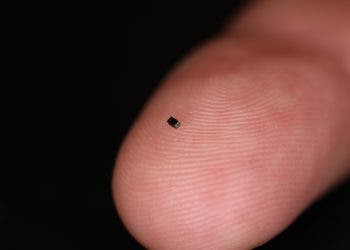Ever felt like you’d just want to disappear? Jason Mayes, a senior developer advocate at Google, made it so you can — on video, at least.

Mayes has developed an app he calls ‘Disappearing People,’ which can remove individuals from video streams in real-time. While it’s not perfect yet, with one example Mayes posted online still showing some pixelation and other flaws, it’s definitely workable. The app was built using Javascript and TensorFlow, a comprehensive library of free tools and resources for machine learning, and Mayes made the code freely available.
Camblock
The app works by first recording a series of images through a user’s webcam, which it uses to establish a baseline of their empty room. Once someone enters the room, the app recognizes them as being a human and erases their pixels out of the video. The gaps are then filled in with pixels from the baseline images of the room to create a seamless video.
In the sample video Mayes uploaded to Youtube, you can see him moving around the room (raw footage on the top part of the video) but not registering on the stream (bottom part of the video). There are a few seconds when his lower arms become visible, the app doesn’t remove his shadow on the wall to the left of the shot, and there are a few other glitches as well, but overall, it was a very fine performance.
You can also try the app for yourself here, and the code can be accessed here.
So far, the app is more entertainment than a practical tool, but it is a very nice proof of concept. If you don’t like taping over your laptop’s camera lens but are nonetheless concerned about privacy, it might just be the app for you, though.






